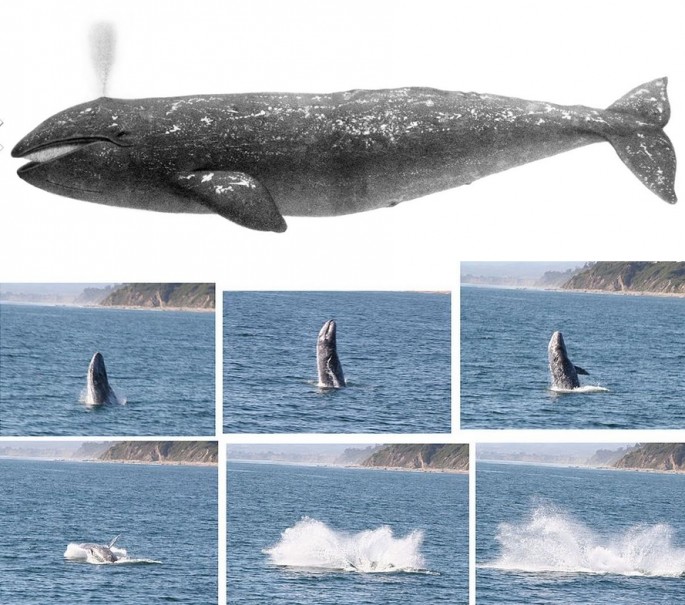An endangered western North Pacific gray whale named "Varvara" (Russian for Barbara) has traveled 14,000 miles (22,500 kilometers) to set a new world record for the longest migration of a mammal ever recorded.
Varvara swam from her primary feeding ground off Russia's Sakhalin Island off Japan; crossed the Pacific Ocean and reached the West Coast of the United States before going to Baja, Mexico.
A statement from Oregon State University, whose scientists helped conduct the whale-tracking study, said there are only some 150 of the endangered gray whales (Eschrichtius robustus) left alive on the planet.
The gray whale, also called "devil fish" because of its fighting behavior when hunted, was formerly thought to be extinct. It gets its name from the gray patches and white mottling on its dark skin. Gray whales are believed to take the longest annual migration of any mammal on Earth.
Varvara's epic journey of 13,987 miles took 172 days and was tracked using a satellite-monitored tag attached to her seven years ago. She was one of seven western North Pacific gray whales in study.
Varvara didn't stop to eat during her six month-long journey, said Oregon State University biologist Bruce Mate, lead author of the study and chair of the school's Marine Mammal Institute. Mate says it's normal for gray whales not to eat during these lengthy journeys.
The previous world record for mammalian migration was set by a humpback whale that migrated some 10,190 miles, according to Guinness World Records.
Before tracking Varvara, scientists knew little about the migratory routes and reproductive areas of the North Pacific gray whales.
"The expectation was western gray whales migrated down (the) Asian Coast and many suspected that the winter breeding area was the South China Sea," said Mate to USA Today.
Varvara, however, surprised researchers by not traveling this route. It seems she took a different route to and from the breeding grounds in Mexico, suggesting she knew the migration route well, Mate said.
Varvara instead crossed the Bering Sea, the Gulf of Alaska and the length of the North American continent to get to the Baja breeding grounds used by eastern North Pacific animals.
Traveling night and day, gray whales average 120 km (75 miles) per day at an average speed of 8 km/h (5 mph). This round trip of 16,000 km to 22,000 km (9,900 to 13,700 mi) is believed to be the longest annual migration of any mammal.
The gray whale is a baleen whale that migrates between feeding and breeding grounds yearly. It reaches a length of 14.9 meters (49 feet), a weight of 36 tonnes (40 short tons), and lives between 55 and 70 years.



























